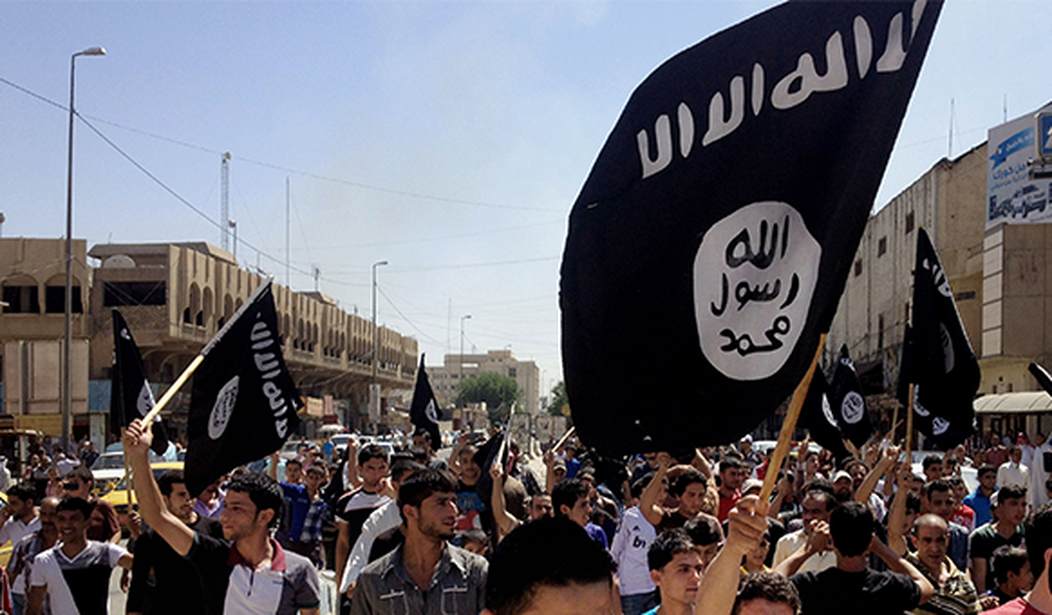A “moderate” Muslim cleric and counter-terrorism advisor to the UK government was recently caught on film referring to Israel as a “terrorist state” and praising “martyrs”—jihadist code for suicide bombers.
During his speech, Imam Irfan Chishti told the crowd that “if they wanted to become ‘mujahideen,’ holy warriors, then they should emulate the Muslim general Saladin, who expelled the Crusaders from Palestine in 1187.” He then lamented, “Where is the modern-day Saladin?”
The choice of Saladin is interesting in that the sultan is in many ways emblematic of Palestinian terrorism: widely seen, especially in the West, as a freedom fighter and liberator, Saladin was in fact a terrorist of the ISIS variety.
Consider some brief facts about this historical figure who is otherwise extolled both in the Muslim and Western worlds. According to his biographer, Baha’ al-Din, Saladin loved hearing Koran recitals, prayed punctually, and “hated philosophers, heretics, and materialists and all opponents of the sharia” (a fitting description of all those Western apologists who currently praise him).
After defeating the crusaders at the battle of Hattin in 1187, rather than ransoming or enslaving them, as was common then, Saladin had the warrior-monks of the military orders of the Temple and Hospital butchered before him in a scene that has long informed ISIS’s propagandistic execution videos.[i] He then had the True Cross, Christendom’s most precious relic, seized and paraded upside down in dirt and dung to Muslim jeers and spits.
Naturally, Saladin’s Western apologists couldn’t care less about these incidents; after all, the crusaders “had it coming to them.” Besides, all wars—including Saladin’s war of “liberation”—get messy.
What, then, does one make of the fact that he severely persecuted Egypt’s indigenous Christians, the Copts—including by crucifying or hanging many thousands of them and routinely breaking the crosses off and tarring their churches—even though the Copts, who refer to Saladin as “the Oppressor of the Cross Worshippers,” had nothing to do with the Franks or the crusades? (See A Sword Over the Nile, pp. 127, 131, 141, and 142.)
In fact, Saladin had a virulent hatred for Christianity—the sort expressed by ISIS and their ilk—above and beyond his conflict with the crusaders. The sultan’s retirement wish, moreover, was, according to his Muslim biographer, to invade and wage jihad on Christian Europe, “until there shall not remain on the face of this earth one unbeliever in Allah, or I will die in the attempt.”
None of this has stopped Western historians from holding Saladin as a model of virtue—one that the West can learn from. Thus, according to an esteemed American historian, Dana Carleton Munro,
When we contrast with this [the Crusader conquest of Jerusalem in 1099] the conduct of Saladin when he captured Jerusalem from the Christians in 1187, we have a striking illustration of the difference between the two civilizations and realize what the Christians might learn from contact with the Saracens [Muslims] in the Holy Land.
Note the present tense: “might learn.” Saladin—a hero for ISIS and militant terrorists the world over—is to be held up in the West as an example from whom today’s “intolerant” Christians need to learn.
In reality, the aftermath of the Saladin’s conquest of Jerusalem in 1187 looks, again, like something straight out of ISIS’s playbook. Although he allowed many Christians to be ransomed, Saladin also ordered some fifteen thousand Christians sold into slavery. “Women and children together came to 8,000 and were quickly divided up among us, bringing a smile to Muslim faces at their lamentation,” wrote Muhammad al-Isfahani, one of Saladin’s confidants who was present at Jerusalem’s capitulation, before he launched into a sadomasochistic tirade extolling the sexual debasement of European women at the hands of Muslim men:
How many well-guarded women were profaned, … and miserly women forced to yield themselves, and women who had been kept hidden [nuns] stripped of their modesty … and free women occupied [meaning “penetrated”], and precious ones used for hard work, and pretty things put to the test, and virgins dishonoured and proud women deflowered … and happy ones made to weep! How many [Muslim] noblemen took them as concubines, how many ardent men blazed for one of them, and celibates were satisfied by them, and thirsty men sated by them, and turbulent men able to give vent to their passion.
Such, then, is the true Saladin of history. As seen, however, none of these ISIS-like aspects interest those many Western historians devoted to whitewashing premodern Islam. Instead, they focus on and highlight the one aspect of his career that can be made to appear positive—that he “liberated” Jerusalem from the crusader “occupiers,” that he was a Muslim defender against Christian offenders.
Interestingly, this exact pattern is duplicated by those many Western commentators devoted to whitewashing modern Islam. Thus, even though Islamic terror groups such as Hamas and Hezbollah share in ISIS’s worldview, their Western apologists focus on and highlight the one aspect of their actions that can be made to appear positive—that they are fighting a war of “liberation” against the “Zionist occupiers,” that they are Muslim defenders against Jewish offenders.
At any rate, from here one can understand why all Imam Irfan Chishti had to do was “apologize” to be reinstated to his high-paying job as a “counter terrorist” expert in the UK: “Some of my words reflect a clear error of judgment, in the heat of the moment,” he said, “and do not reflect my sentiments or the sentiments of the audience. I now appreciate that my ill-chosen words will have caused offence and hurt to the Jewish community and I tender my most profound apologies.”
Of course, of all his “ill-chosen words,” surely those concerning Saladin are not among those he would take back; for few in the West know who the true Saladin was or what the “Saladin paradigm” is: the Western penchant to find, extrapolate, and obsess over one noble aspect of Muslims who otherwise were Islamic terrorists—a paradigm alive and well today.
Related: On September 11, CNN Whitewashes Islam
—————————————–
[i] After boasting “I shall purify the land of these two impure races [Templars and Hospitallers],” Saladin “ordered that they should be beheaded, choosing to have them dead rather than in prison,” writes eyewitness Baha’ al-Din: “With him was a whole band of scholars and Sufis and a certain number of devout men and ascetics; each begged to be allowed to kill one of them, and drew his scimitar and rolled back his sleeve. Saladin, his face joyful, was sitting on his dais; the infidels showed black despair, the troops were drawn up in their ranks, the amirs stood in double file. There were some who slashed and cut cleanly, and were thanked for it.” After saying that some of these would-be executioners did not have the stomach to continue in the ritual slaughter, Baha’ al-Din focused on one who “killed unbelief to give life to Islam”: “I saw there the man who laughed scornfully and slaughtered, who spoke and acted; how many promises he fulfilled, how much praise he won, the eternal rewards he secured with the blood he shed, the pious works added to his account with a neck severed by him” (Gabrieli, 138-139).










Join the conversation as a VIP Member